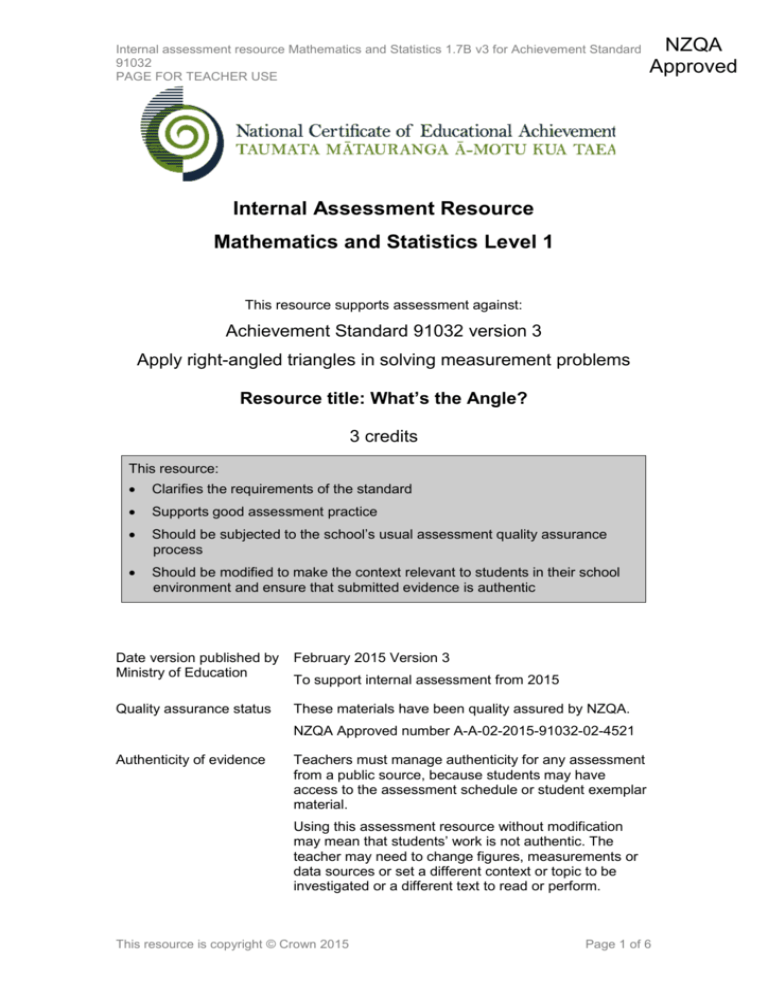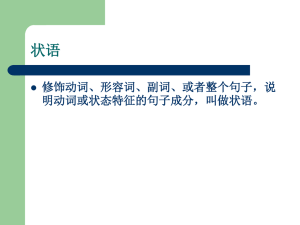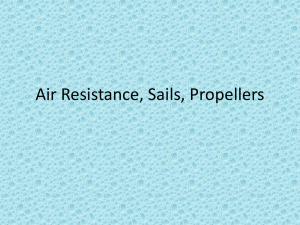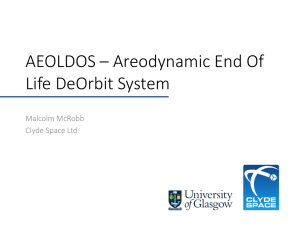Level 1 Mathematics and Statistics internal
advertisement

Internal assessment resource Mathematics and Statistics 1.7B v3 for Achievement Standard 91032 PAGE FOR TEACHER USE NZQA Approved Internal Assessment Resource Mathematics and Statistics Level 1 This resource supports assessment against: Achievement Standard 91032 version 3 Apply right-angled triangles in solving measurement problems Resource title: What’s the Angle? 3 credits This resource: Clarifies the requirements of the standard Supports good assessment practice Should be subjected to the school’s usual assessment quality assurance process Should be modified to make the context relevant to students in their school environment and ensure that submitted evidence is authentic Date version published by Ministry of Education February 2015 Version 3 Quality assurance status These materials have been quality assured by NZQA. To support internal assessment from 2015 NZQA Approved number A-A-02-2015-91032-02-4521 Authenticity of evidence Teachers must manage authenticity for any assessment from a public source, because students may have access to the assessment schedule or student exemplar material. Using this assessment resource without modification may mean that students’ work is not authentic. The teacher may need to change figures, measurements or data sources or set a different context or topic to be investigated or a different text to read or perform. This resource is copyright © Crown 2015 Page 1 of 6 Internal assessment resource Mathematics and Statistics 1.7B v3 for Achievement Standard 91032 PAGE FOR TEACHER USE Internal Assessment Resource Achievement Standard Mathematics and Statistics 91032: Apply right-angled triangles in solving measurement problems Resource reference: Mathematics and Statistics 1.7B v3 Resource title: What’s the Angle? Credits: 3 Teacher guidelines The following guidelines are supplied to enable teachers to carry out valid and consistent assessment using this internal assessment resource. Teachers need to be very familiar with the outcome being assessed by Achievement Standard Mathematics and Statistics 91032. The achievement criteria and the explanatory notes contain information, definitions, and requirements that are crucial when interpreting the standard and assessing students against it. Context/setting This activity requires students to take measurements and use trigonometric ratios and Pythagoras’ theorem in two and three dimensions. The context for this resource is a triangular solar sail. Students will take appropriate measurements to calculate a hypotenuse length, vertical distance, and internal angle of a right triangle. They will produce a description of the solar sail and find the length and height of the van required to transport the solar sail with its pole. This resource can be adapted for any context that includes a right triangle with a vertical height not measured directly. Conditions Two time periods will be required for the assessment. Students take measurements in the first period in groups of two to three. In the second period, students independently use the measurements taken earlier to perform calculations and prepare a report. Students should have access to appropriate technology. An area must be marked off so that small groups of students can make unique measurements along a horizontal floor, sighting a tall vertical pole or wall. These points could be at a corner of a large room or at the (outside) corner of a building. This resource is copyright © Crown 2015 Page 2 of 6 Internal assessment resource Mathematics and Statistics 1.7B v3 for Achievement Standard 91032 PAGE FOR TEACHER USE Mark a vertical series of points A at heights greater than or equal to 3.5 metres above floor level (ground level). Point B is located directly under points A. Mark a horizontal series of points C at distances greater than or equal to 8 metres from point B. Mark a second horizontal series of points D at distances greater than 2 metres from point B and on a horizontal line perpendicular to BC. The points do not have to be uniformly distributed. Note: Plane BCD must be elevated off the ground sufficiently that students can sight the angle of elevation ACB. (3 equal-height desks would achieve this.) Diagram not to scale A1 A2 A3 A4 A5 A6 A7 3 6 D 8 D C1 C7 C5 C3 C8 C6 C4 C2 D 4 D 7 D 2 D 5 D B D 1 A8 Mark points so that each student in a group of students can be assigned a unique set of points for their sail, defined by the plane AjCkDl. For example, one student might measure distance BC1, distance BD5, and angle BC1A3 (plane A3C1D5), and another student might measure distance BC7, distance BD5, and angle BC7A8 (plane A8C7D5), and so on. Resource requirements Students will need to have access to suitable equipment to measure distance and angles, such as a tape measure and a clinometer. Additional information A simple clinometer can be constructed using a protractor, string, and a weight (see http://nrich.maths.org/5382 for sample instructions). A more accurate angle measure is achieved using a laser pointer mounted to a tripod with an angle scale attached. This resource is copyright © Crown 2015 Page 3 of 6 Internal assessment resource Mathematics and Statistics 1.7B v3 for Achievement Standard 91032 PAGE FOR STUDENT USE Internal Assessment Resource Achievement Standard Mathematics and Statistics 91032: Apply right-angled triangles in solving measurement problems Resource reference: Mathematics and Statistics 1.7B v3 Resource title: What’s the Angle? Credits: 3 Achievement Apply right-angled triangles in solving measurement problems. Achievement with Merit Apply right-angled triangles, using relational thinking, in solving measurement problems. Achievement with Excellence Apply right-angled triangles, using extended abstract thinking, in solving measurement problems. Student instructions Introduction Your class has been given the task of calculating the dimensions of a fabric solar sail fixed in tension at its corners so that the fabric is kept stiff. The manufacturer has asked you to supply sketches showing dimensions so that they can manufacture and deliver the solar sail to your site for evaluation. This activity requires you to take measurements to determine the dimensions for your unique solar sail and then find the dimensions of a van required to deliver it to the site. Working in groups of up to three, you will be given a period of <teacher to insert time here> to take measurements of your site. Working independently, you will be given <teacher to insert time here> to analyse the data, perform the appropriate calculations, and complete a sketch. You will be assessed on the quality of your discussion and reasoning and how well you link this to the context. This resource is copyright © Crown 2015 Page 4 of 6 Internal assessment resource Mathematics and Statistics 1.7B v3 for Achievement Standard 91032 PAGE FOR STUDENT USE Task Solar sail dimensions A Your teacher will indicate the position of your particular solar sail by giving you a set of three points, ACD. The points ACE represent the corners of the solar sail. B Using the points given by your teacher, take measurements to enable you to: calculate the height of anchor point A; this will determine the length of the pole find all the dimensions to determine the size and shape of the solar sail. D C Diagram not to scale E Write a description of the shape of the solar sail, using the dimensions you have found. Delivery instructions The manufacturer will deliver the solar sail to your location with a pole that has to be placed at an angle of 13º with the floor of the delivery van. The pole will be 2.5 metres longer than the height of the anchor point that you have calculated; so that it can be sunk into a concrete foundation and still leave room for fittings to be fixed above the sail. One end of the pole will be at the left-hand lower corner of the van, and the other end at the right-hand upper corner. The maximum allowable width of the van is 2.4 metres. Describe to the manufacturer how they should calculate the height and length of the smallest van they can use to deliver your solar sail with its pole. This resource is copyright © Crown 2015 Page 5 of 6 Internal assessment resource Mathematics and Statistics 1.7B v3 for Achievement Standard 91032 PAGE FOR TEACHER USE Assessment schedule: Mathematics and Statistics 91032 What’s the Angle? Evidence/Judgements for Achievement Applying right-angled triangles in solving measurement problems will involve: selecting and using a range of methods in solving problems demonstrating knowledge of measurement and geometric concepts and terms communicating solutions that usually require one or two steps. At least three different methods need to be selected and correctly used in solving problems. Evidence/Judgements for Achievement with Merit Applying right-angled triangles, using relational thinking, in solving measurement problems will involve one or more of: Applying right-angled triangles, using extended abstract thinking, in solving measurement problems will involve one or more of: selecting and carrying out a logical sequence of steps devising a strategy to investigate or solve a problem connecting different concepts and representations identifying relevant concepts in context developing a chain of logical reasoning demonstrating understanding of concepts and also using correct mathematical statements, or communicating mathematical insight. and also relating findings to the context, or communicating thinking using appropriate mathematical statements. For example, the student: uses Pythagoras’ theorem to calculate the length BE uses trigonometry to find the height of the pole uses trigonometry to find an angle of the shade sail takes measurements at an appropriate level of precision. Evidence/Judgements for Achievement with Excellence The student takes appropriate measurements to find the height of the pole and describe the size and shape of the sail; then uses these dimensions to determine the height of the van required to deliver the sail and pole to the site. The student accurately describes the dimensions of the solar sail and calculates the minimum height and length of the van required to deliver the sail to the site. The student has clearly communicated their solution using correct mathematical statements. The student has clearly shown a logical sequence of steps and has communicated using appropriate mathematical statements. The student has communicated what is being calculated at each step. Final grades will be decided using professional judgement based on a holistic examination of the evidence provided against the criteria in the Achievement Standard. This resource is copyright © Crown 2015 Page 6 of 6







